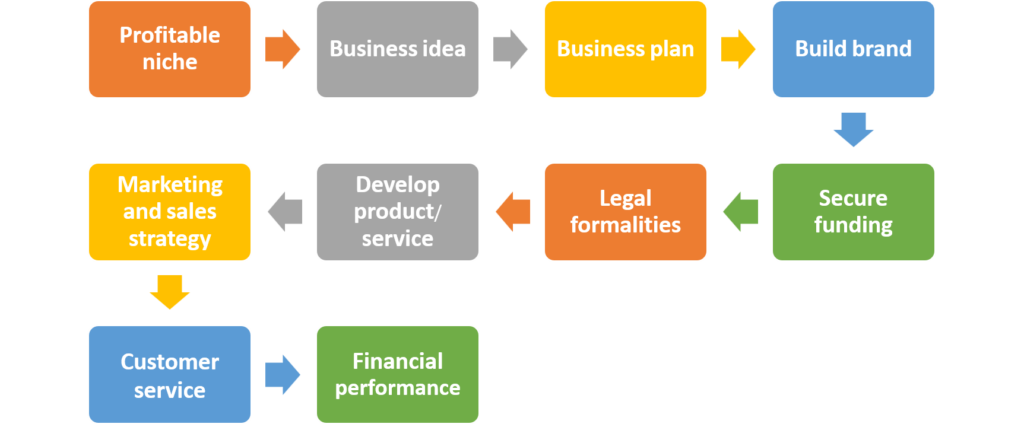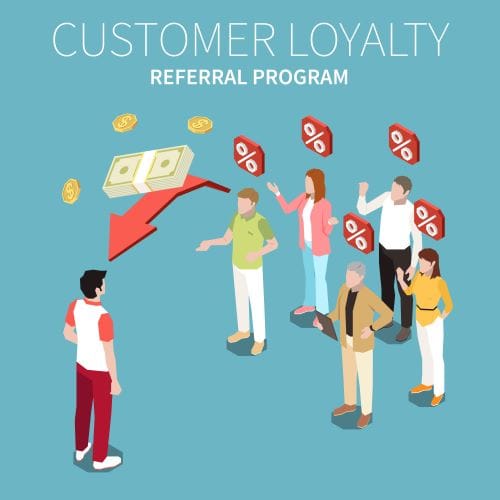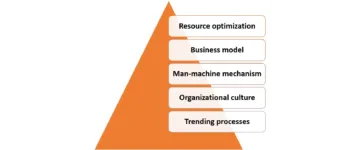Competitive advantage is all about standing out in today’s digital age. It determines a business’s success. In short, it establishes a business’s unique identity, giving it a critical edge over its competitors. It is crucial to understand ways to identify, build, and protect this advantage and keep it consistent in the long run. Generally, small and medium-scale industries (SMEs) have a unique advantage over larger companies.
In this article, we will learn the types of competitive advantage, strategies to make it sustainable, and some real-life examples.
What is Competitive Advantage?
It will likely have a special trump card over its competition that attracts customers, ensures long-term success, and increases efficiency. This competitive advantage can result from offering a better product, having minimal costs, or maintaining good customer relationships.

It can be temporary or sustainable.
- Temporary Competitive Advantage: These are usually short-term advantages that result from implementing a cost-cutting strategy or doing some innovation. These can be picked up and replicated easily by other competitors.
- Sustainable Competitive Advantage: Sustainable edges can result from brand reputation, proprietary technology, or strong commitments. These original traits are difficult for other companies to replicate.
A strong competitive advantage is important for getting and retaining customers, securing a favorable market position, and driving long-term growth.
Why Competitive Advantage Matters
It is essential because it directly influences a company’s ability to survive and thrive in a competitive market. Here are some key reasons:
Attracts and Retains Customers
A business with a strong competitive advantage appeals to customers, through better pricing, unique products, or outstanding customer service. These attributes keep customers satisfied and loyal.
Increases Profit
Businesses with a competitive advantage may charge premium prices or reduce costs resulting in higher profit margins. For example, a company that is the lowest-cost producer in its industry can maintain lower prices while still earning a profit, creating a win-win situation.

If you want to know about different aspects of growing a business, read our post on how to build a profitable business.
Strengthens Market Position
Competitive advantage can help businesses secure strong positions in the market. This base protects the company from competitors and economic fluctuations, especially if the advantage is sustainable over time.
Supports Long-Term Growth and Stability
Competitive advantage creates a culture of customer loyalty resulting in ongoing growth and stability. Companies with strong edges are more resilient, able to navigate industry changes and retain their market share.
Encourages Innovation and Adaptability
Gaining and holding a competitive advantage usually requires continuous innovation and responsiveness to customer needs. This keeps the business relevant and encourages a culture of adaptability.
Types of competitive advantage
Businesses can attain competitive advantage in several forms, each offering unique benefits and challenges.
Cost Leadership
Cost leadership is earned by being the lowest-cost producer in the industry. It is a condition when a company offers products or services at a lower price than competitors without giving up profitability. This involves optimizing production processes, sourcing materials at lower rates, and influencing economies of scale. Set technologies and incremental improvements are significant in this type of advantage.

Walmart represents the effective cost leadership. It streamlines logistics and negotiates lower prices from suppliers, hence, offering discounts to customers.
Differentiation
Differentiation focuses on creating exceptional products or services that offer multiple benefits to customers, making them stand out in the market. This kind of competitive advantage is possible through innovation, exceptional quality, superior customer service, or brand reputation.
Apple differentiates itself through innovative design, ease of use, and a strong brand essence. Its high-quality, stylish products allow it to demand premium prices while enjoying a huge customer base.
Focus/Niche Strategy
A focus or niche strategy targets a specific market part, addressing the unique needs of a particular customer group. A company can concentrate its efforts and resources on serving a particular segment by narrowing the scope to a particular demographic, geographic area, or customer need.

Rolex focuses on the high-end luxury watch market. Instead of competing with mass-market watchmakers, Rolex offers exclusivity, quality, and prestige, appealing to luxury consumers.
Sustainable Competitive Advantage
Sustainable competitive advantage is a long-term benefit that maintains the market stability of a particular business. This often combines brand loyalty, proprietary technology, strong distribution channels, or a healthy corporate culture that enhances innovation.
Coca-Cola has maintained a sustainable competitive advantage through its powerful brand identity, extensive distribution network, and ongoing product innovation. These factors maintain customer loyalty and make it challenging for new groups to contend directly.
These competitive advantage types can be highly effective, but companies may need to adjust their strategies to the evolving market. The best advantage aligns with the company’s strengths and resonates with its target audience, creating lasting impact. There are three key strategies to maintain a sustainable competitive advantage.
Learn more, 4 ways to expand your business with SWOT analysis.
Innovation
Innovation offers something unique to the market including new products, services, processes, or even business models. It can be cultivated by using the following modes.
- Invest in R & D: Allocating resources to research and development can lead to leading-edge discoveries.
- Encourage Culture of Creativity: Encouraging an open, collaborative environment where people feel motivated to share ideas that can bring innovations.
- Adapt to Market Trends: Staying on top of industry trends and customer feedback ensures that innovation is aligned with customer needs.

Tesla’s focus on electric vehicles and innovations in autonomous driving has set it apart in the automotive sector, creating a lasting competitive advantage.
Refer to our article explore these 5 AI trends in business to stay competitive to learn different ways to adapt to digitization.
Customer Loyalty
Loyal customers repeat business and support the brand, generating new customers organically. Building strong relationships with customers is challenging for competitors to break. Loyalty can be attained by exceptional customer service, personalized interactions, and loyalty programs.

Apple’s ecosystem approach and focus on seamless user experiences have cultivated a loyal customer base.
Efficient Operations
Efficient operations can decrease costs, enhance productivity, and improve customer satisfaction. Efficient companies can deliver value at a lower cost or faster rate, making it harder for competitors to keep up. It can be done by:
- Optimizing Supply Chains: Streamlined supply chains reduce production and delivery costs, allowing for more competitive pricing or higher margins.
- Investing in Technology and Automation: Automation and digital tools can make processes faster and more accurate, reducing manual errors and waste.
- Continuous Improvement: Adopting lean practices or Kaizen principles can ensure the company is always finding new ways to improve efficiency.
Amazon’s refined logistics and supply chain network allow it to offer fast shipping and low prices, strengthening its competitive advantage.
Competitive Advantage of Small Businesses Over Larger Businesses
Small businesses may lack the ample resources of large corporations, but they possess unique advantages that can make them highly competitive. These qualities allow them to thrive in areas where larger companies often struggle.
Agility and Adaptability
Small businesses can respond quickly to market fluctuations, adapt their products or services, and make fast decisions. This agility allows them to stay relevant and meet new customer demands more effectively than larger, less flexible organizations.
- Quick Decision-Making: Small business owners can often make decisions without extensive processes, allowing for rapid decisions when needed.
- Experimentation and Innovation: Small businesses can test new ideas, customize offerings, and adjust strategies with less risk. They can respond to feedback, spot trends, and implement changes faster than large companies.
Many small businesses demonstrated this agility during the COVID-19 pandemic by shifting to online models, offering delivery services, or repurposing their products to meet changing customer needs. For instance, local restaurants quickly set up online ordering and pickup options, adjusting much faster than many national chains.
Strong Customer Relationships
Small businesses constantly build more personal, genuine connections with their customers. This enables small businesses to offer customized experiences that are difficult for larger businesses to duplicate.

- Personalized Service: Small business owners often know their customers by name, remember their preferences, and make them feel valued. This level of personal attention can significantly enhance the customer experience.
- Community Engagement: Small businesses frequently become integral parts of their local communities, connecting with customers on a deeper level. Engaging in local events, supporting community causes, and showing a genuine interest in customer well-being all help build lasting loyalty.
Local bookstores and coffee shops often grow loyal customer bases by offering a warm, personalized setting. Customers return not only for the products but also for the personal interactions and sense of community.


